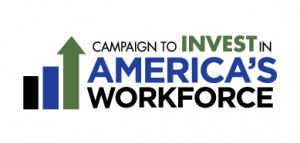Perkins Funding Still in Jeopardy
The continuing resolution (CR) passed by Congress last month is set to expire on December 16. Having passed three of the 12 appropriations bills, Congress must now pass the remaining nine bills or another CR. Their goal is to package all nine bills in an omnibus bill and pass it next week. However, if this does not happen, Congress can either pass another short-term CR to buy more time, or include all compromised bills in the omnibus and fund the remaining bills under a year-long CR.
Unfortunately, some of these bills, including Labor-HHS-Education, are so controversial that Congress may choose not work out a deal and instead will fund them under a year-long CR. If this happens, the 1.5% cut applied to Perkins Act advanced appropriations in a previous CR would remain. This would mean that states will not get that money back, and it would set the level for Perkins funding lower for next year. But, if a final Labor-HHS-Education bill is passed and it contains level funding for Perkins, then states will get that money back.
So, the fight is not yet over and we need your help! Call your Member of Congress today and encourage them to work to complete the remaining appropriations bills and to fund the Perkins Act at FY11 levels. You can reach the U.S. Capitol Switchboard at (202) 224-3121 and ask for your Senators’ and/or Representative’s office.
Bills Introduced
Workforce Investment Act
House Republicans introduced two bills this week that will serve as the basis for Workforce Investment Act (WIA) reauthorization in the House.
Streamlining Workforce Development Programs Act
Rep. Virginia Foxx (NC) introduced H.R. 3610, the Streamlining Workforce Development Programs Act, which would consolidate 33 of the 47 job training programs identified in a 2011 report by the Government Accountability Office as duplicative into four flexible Workforce Investment Funds. These funds would focus on adults, youth, veterans and special populations. This bill would also require states and locals to set common performance measures for all employment and job training programs.
The Streamlining Workforce Development Programs Act also allows states to submit a unified plan encompassing two or more job training and related programs. Both Perkins secondary and postsecondary programs are eligible to be a part of a state’s unified plan.
Local Job Opportunities and Business Success (Local JOBS) Act
Rep. Joe Heck (NV) introduced H.R. 3611, the Local Job Opportunities and Business Success (Local JOBS) Act. The goal of this bill is to ensure that the nation’s job training system can effectively provide workers with the skills necessary to compete in the local workforce. To that end, the bill would require that two-thirds of workforce investment board members be employers; that a portion of resources (as determined by the local WIB) be spent directly on training; and that local boards partner with higher education institutions and economic development organizations to better develop job training programs that address the needs of area businesses.
Bipartisan Jobs Creation Act
Senators Susan Collins (ME) and Claire McCaskill (MO) this week announced the Bipartisan Jobs Creation Act legislation which is aimed at creating jobs by cutting taxes for businesses, investing in transportation infrastructure, and consolidating federal job training programs. The bill would be paid for by a surtax on taxpayers earning more than $1 million per year and ending subsidies for oil companies. This bill includes two areas of interest:
- Consolidating Duplicative Federal Job Programs – In response to a March 2011 GAO report that revealed that the government spends $18 billion on 47 different jobs training programs across numerous agencies, this bill would require OMB to study the effectiveness and consolidation of duplicative job training programs and make legislative recommendations to Congress on consolidating job training programs. Of the savings that result from this consolidation, half will be devoted to classroom and hands-on training, and the other half will be allocated to reducing the deficit.
- Regional Employment and Innovation Strategies – The bill would authorize up to $350 million in competitive grants for cluster development each year. Cluster development includes public-private partnerships at the state and local level that identify and develop a competitive advantage in a region, and train the skilled workers needed to build on those advantages.
Nancy Conneely, Public Policy Manager
 n develop the market-ready skills to meet the needs of U.S. industries and the larger U.S. economy.
n develop the market-ready skills to meet the needs of U.S. industries and the larger U.S. economy.

